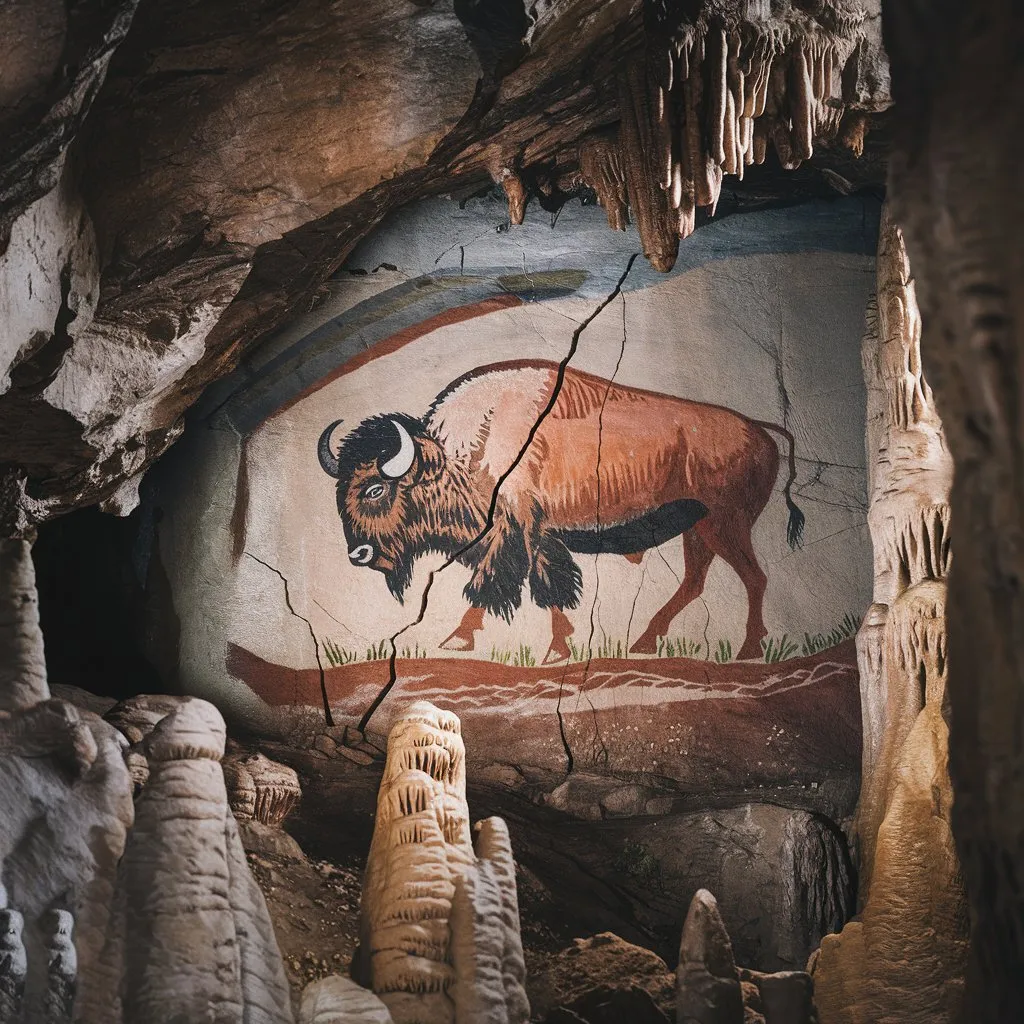Ancient art stands as a testament to humanity’s enduring creativity and resilience. Before the written word, art was one of the primary means of expression, used to communicate stories, beliefs, and cultural values. Ancient Artz offers a window into these early societies, showing us the ways in which they viewed the world, their spiritual beliefs, and their daily lives. From the earliest cave paintings to the grand monuments of empires like Egypt and Mesopotamia, we embark on a timeless journey to uncover the treasures of ancient art.
Ancient Artz
Art has always been a fundamental part of human history. Ancient civilizations used their artistic creations to communicate, celebrate, and worship. Ancient Artz reflects the deep cultural values of societies long gone, capturing the imagination of people even today. In this article, we explore the origins of ancient art, its different forms across continents, and its lasting influence on modern culture.
The Origins of Ancient Artz: Prehistoric Cave Paintings
The journey of Ancient Artz begins with the prehistoric cave paintings, some of the earliest examples of human creativity. These paintings offer us a glimpse into the lives of our distant ancestors, providing clues about their spiritual beliefs, hunting rituals, and survival tactics.
The Oldest Known Cave Paintings
The cave paintings at Lascaux in France and Altamira in Spain, dating back more than 30,000 years, are among the oldest known artworks. These paintings depict wild animals such as bison, horses, and deer. But what is truly fascinating is the sophistication and detail with which they were painted. These ancient artists captured the essence of movement and life using only primitive tools and natural pigments.
Other significant cave art sites include the Chauvet Cave in France, where paintings show detailed representations of predators like lions and bears, and the cave sites in Indonesia, which are even older and showcase early hand stencils and animal figures.
Techniques and Materials Used in Cave Paintings
The artists of the prehistoric era used natural materials like charcoal, ochre, and hematite. They ground these substances into fine powders to create pigments and then mixed them with water or animal fat to create a medium that could be applied to rock surfaces. They used their fingers, crude brushes made from animal hair, or even hollow bones to blow the pigment onto the walls, a technique that allowed them to create intricate patterns and shading.
The ingenuity of their techniques and the durability of their materials have allowed these cave paintings to last tens of thousands of years, preserving their beauty and meaning for future generations.

Mesopotamian Art: The Cradle of Civilization
Mesopotamia, located between the Tigris and Euphrates rivers, is often called the "Cradle of Civilization." As one of the first regions where complex societies emerged, it is home to some of the earliest forms of artistic expression, ranging from architecture to sculpture and intricate pottery.
Significant Artworks of Mesopotamia
One of the most iconic pieces of Mesopotamian art is the Stele of Hammurabi, an ancient legal code inscribed on a large stone slab. The stele not only showcases early written language but also includes a carved image of King Hammurabi receiving the laws from the sun god Shamash. This blending of art and governance exemplifies how Mesopotamian art was tied to religion and power.
Other important Mesopotamian artworks include Assyrian reliefs that depict scenes of war and hunting. These reliefs, found in the ruins of ancient palaces, are marvels of detail and craftsmanship, illustrating the might and accomplishments of Assyrian kings.
Mesopotamian Art’s Influence on Modern Culture
The art of Mesopotamia has had a lasting influence on architecture, particularly in the Middle East. Ziggurats, the massive temples built to honor the gods, served as the architectural inspiration for modern pyramidal and stepped structures. The region’s use of symbolism and narrative in art also laid the groundwork for storytelling through visual media, a tradition that continues in art and film today.
The Magnificence of Ancient Egyptian Art
Ancient Egypt is perhaps the most well-known of ancient civilizations, and its art is among the most recognizable in the world. Egyptian art, with its monumental architecture, detailed tomb paintings, and exquisite jewelry, reflects the civilization’s obsession with the afterlife and their gods.
The Symbolism Behind Egyptian Art
Every aspect of Egyptian art was symbolic. For example, the use of color in their art had a specific meaning: green represented fertility and rebirth, while black was associated with the afterlife and death. The positioning of figures was also carefully considered—gods and pharaohs were always shown in larger-than-life scale compared to ordinary people to indicate their divine or royal status.
Hieroglyphics, the ancient Egyptian writing system, was often incorporated into artworks, adding another layer of meaning. Scenes from the Book of the Dead, which adorned the walls of tombs, told the story of the deceased's journey through the afterlife, ensuring their successful passage to the next world.
Famous Ancient Egyptian Artworks
Some of the most iconic works of ancient art come from Egypt, including the Great Pyramids of Giza, the Sphinx, and the Bust of Nefertiti. These artworks represent the zenith of Egyptian craftsmanship and their dedication to preserving the memory of their rulers and gods.
The golden funerary mask of Tutankhamun is another masterpiece of ancient Egyptian art. Made of solid gold and inlaid with semi-precious stones, this mask was placed over the head of the pharaoh's mummy to ensure his safe journey to the afterlife.

Greek and Roman Art: A Legacy of Innovation
Greek and Roman civilizations were pioneers of realism in art. They shifted the focus from religious iconography to celebrating the human form and individual achievement.
The Classical Greek Sculptures
Greek artists perfected the art of sculpting the human body, with an emphasis on realism, anatomy, and movement. The Discobolus (Discus Thrower) and the Venus de Milo are prime examples of this. These sculptures were designed to be lifelike, capturing motion and emotion with unparalleled detail.
Roman Frescoes and Mosaics
The Romans, inheriting much of their artistic tradition from the Greeks, took art into their homes in the form of frescoes and mosaics. Roman frescoes, which adorned the walls of villas and public buildings, depicted mythological scenes, landscapes, and everyday life. Mosaics, made of small pieces of colored stone or glass, often depicted geometric patterns or grandiose scenes from mythology, adding beauty and elegance to Roman interiors.
Asian Contributions to Ancient Artz
The Asian continent is home to some of the world’s most ancient and diverse artistic traditions. From the grandeur of China’s Terracotta Army to the spiritual sculptures of India, Asia has made monumental contributions to ancient art.
Ancient Chinese Pottery and Sculpture
One of the most significant contributions from ancient China is the Terracotta Army, an assembly of life-sized clay soldiers buried with Emperor Qin Shi Huang to protect him in the afterlife. Each soldier is unique, showcasing China’s early expertise in sculpture and mass production.
Indian Art’s Spiritual Influence
In India, art and religion are inextricably linked. Sculptures of deities such as Shiva, Vishnu, and Buddha are not merely decorative; they are spiritual tools meant to aid in meditation and worship. Temples across India are adorned with carvings that depict scenes from Hindu mythology, reinforcing the importance of art in Indian spiritual life.
Pre-Columbian Art of the Americas
In the Americas, long before European contact, civilizations like the Maya and the Aztecs were creating art that reflected their complex societies and spiritual beliefs.
Mayan and Aztec Contributions to Ancient Art
The Mayan stelae, intricately carved stone pillars, are among the most well-known forms of Mayan art. These stelae often depict rulers and gods, alongside glyphs that tell stories of their deeds. The Aztecs, known for their metalworking skills, produced beautiful gold and silver jewelry, as well as ceremonial weapons that were as much art as they were tools.
Symbolism and Materials in Pre-Columbian Art
Pre-Columbian artists made extensive use of materials such as jade, turquoise, gold, and feathers. Each material had its own symbolic meaning—jade, for example, was associated with life and fertility. These materials were often used to create intricate masks, sculptures, and jewelry that were central to religious ceremonies.

African and Oceanic Art: Untold Stories
Africa and Oceania have long traditions of artistic expression that are sometimes overlooked in Western art history. These regions’ art forms are deeply connected to their cultures, particularly in rituals and ceremonies.
Symbolism in African Art
In Africa, masks are one of the most significant forms of ancient art. Used in religious ceremonies, these masks were believed to channel the spirits of ancestors and gods. Each mask’s design carried deep symbolic meaning, from the choice of colors to the materials used.
Oceanic Art and Ritualistic Expression
In Oceania, art was closely tied to rituals and ceremonies. From tapa cloths (made from bark) to intricately carved canoes and totem poles, Oceanic art was used to honor gods, commemorate the dead, and celebrate life’s milestones. These works, often created for communal use, are imbued with spiritual significance.
FAQs About Ancient Artz
1. What are the key characteristics of ancient artz?
Ancient art is characterized by its focus on symbolism, spirituality, and storytelling. It often used natural materials and was created for religious or ceremonial purposes.
2. How did ancient art influence modern art?
Many modern artists have drawn inspiration from ancient techniques, particularly in sculpture and pottery. Ancient art has also influenced modern architecture, particularly in the use of symmetry and monumental design.
3. Where can I buy authentic ancient art?
Authentic ancient art can be found at reputable auction houses and specialized galleries. It’s important to verify the authenticity of pieces before purchasing.
4. Why was art so important in ancient civilizations?
Art was a way for ancient civilizations to communicate their beliefs, commemorate important events, and honor their gods. It also played a crucial role in ceremonies and rituals.
5. Can ancient art still be created today?
While ancient techniques are no longer widely practiced, many modern artists draw inspiration from ancient art, using similar materials and methods to create contemporary works that echo the past.
Through the journey of Ancient Artz, we’ve explored the profound impact that ancient art has had on human culture. These artworks are not only beautiful but also serve as valuable records of the beliefs, customs, and innovations of early civilizations. From the cave paintings of our prehistoric ancestors to the monumental sculptures of the Greeks and Egyptians, ancient art has left a legacy that continues to shape the world of art and culture today.

 Vietnamese
Vietnamese









Nguyen Hoai Thanh
Nguyen Hoai Thanh is the Founder and CEO of Metaconex. With 12 years of experience in developing websites, applications and digital media, Nguyen Hoai Thanh has many stories and experiences of success to share.